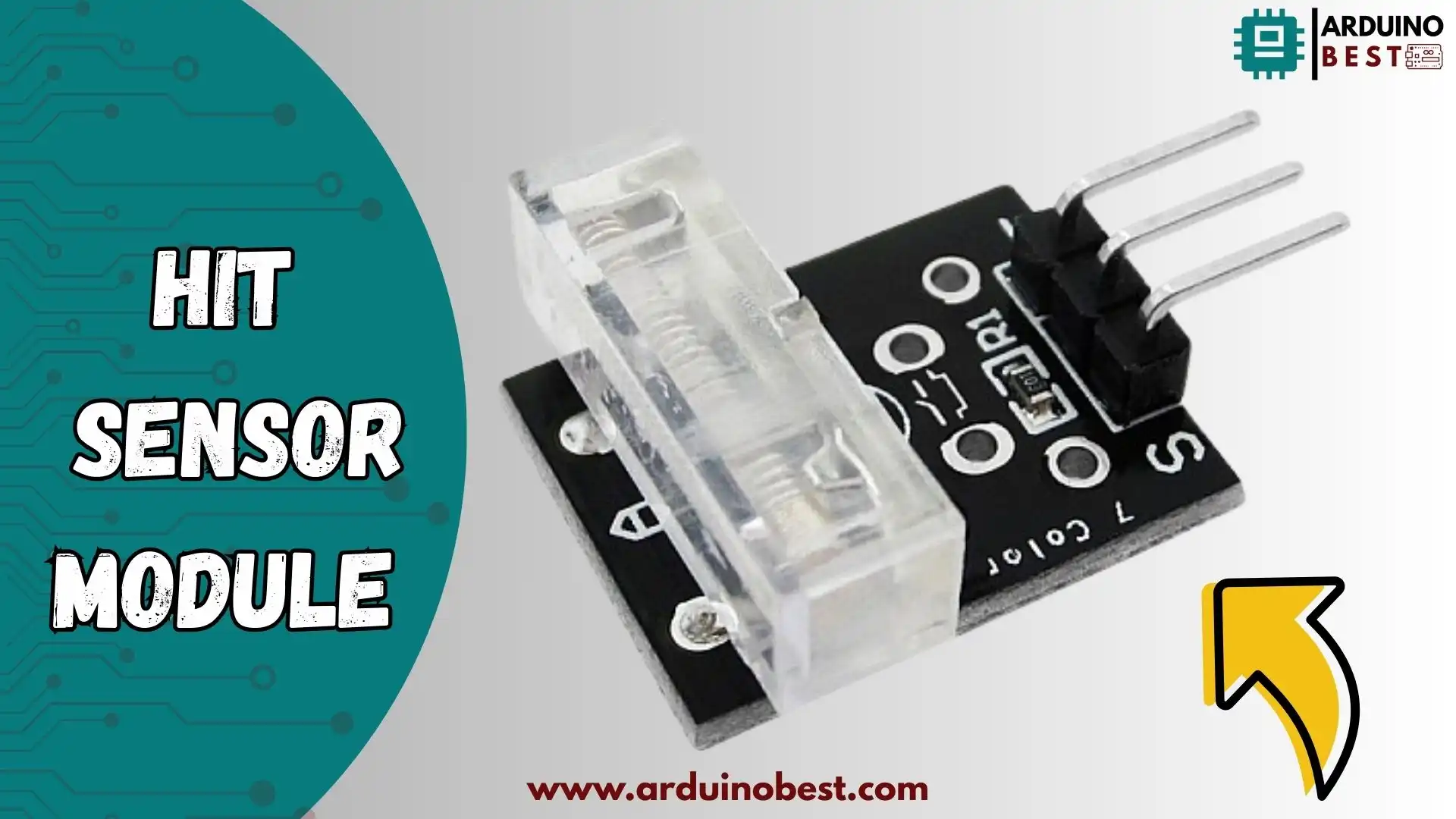Table of Contents
Introduction to Hit Sensor Modules
A hit sensor module is a vital component used in a wide range of applications, from robotics to consumer electronics. It detects physical impacts or vibrations and generates signals that trigger a response in the system. These sensors are essential for ensuring the safety and functionality of devices by providing real-time feedback on any impact, collision, or force exerted.
Hit sensors are commonly used in:
- Security systems for detecting unauthorized access
- Automotive safety systems for airbags and collision detection
- Consumer electronics, including smartphones for impact protection
- Robotics for collision avoidance and safety
For a deeper dive into the working principles of hit sensors, check out this overview of piezoelectric sensors from Sensors Online, which explains the technology behind these essential components.
Types of Hit Sensor Modules
There are various types of hit sensor modules, each serving different needs and applications. Below, we will explore the most commonly used types:
1. Mechanical Hit Sensors
Mechanical hit sensors are among the most straightforward and reliable sensors for detecting physical impacts. These sensors use mechanical elements that trigger a response when a force is applied.
- Simple Design: Typically includes a spring or a metal contact that completes a circuit upon impact.
- Common Uses: Robotics, automotive safety, and basic security systems.
- Advantages: Cost-effective and easy to implement.
2. Piezoelectric Hit Sensors
Piezoelectric hit sensors rely on the piezoelectric effect, where certain materials generate an electrical charge when subjected to stress or pressure.
- Working Principle: A crystal inside the sensor generates a voltage when impacted.
- Common Applications: Vibration monitoring, industrial equipment, and impact detection in vehicles.
- Advantages: High sensitivity, small form factor, and ability to detect quick, transient impacts.
For a better understanding of how these sensors work, you can explore the Adafruit Force Sensitive Resistor (FSR) sensors page, which gives an overview of how piezoelectric sensors are used for force measurement.
3. Capacitive and Inductive Hit Sensors
Capacitive and inductive hit sensors detect changes in capacitance or inductance caused by physical impact.
- Capacitive Sensors: Detect changes in electric fields when impacted.
- Inductive Sensors: Detect changes in inductance as a result of an impact.
These types are generally used in non-contact applications and are ideal for scenarios where physical contact may damage the sensor or the system.
4. Comparison of Hit Sensor Types
Each type of sensor comes with its own advantages and drawbacks:
- Mechanical Sensors: Simple and reliable but less sensitive.
- Piezoelectric Sensors: Extremely sensitive but more costly and complex.
- Capacitive and Inductive Sensors: Ideal for non-contact applications but may require calibration.
Working Principle of Hit Sensor Modules
The working principle of a hit sensor module revolves around detecting changes caused by physical forces. Here’s a breakdown of how these sensors work:
- Force Detection: When a hit or impact occurs, it applies pressure or force to the sensor.
- Signal Generation: This force causes the sensor’s internal components (e.g., a piezoelectric crystal or a mechanical switch) to generate an electrical signal.
- Signal Processing: The signal is then sent to a microcontroller or processing unit, which interprets the information and triggers an appropriate response, such as activating an alarm or deploying an airbag.
Examples of Hit Sensor Applications:
- Airbags in vehicles use hit sensors to detect collisions and deploy in response to impact.
- Smartphones use impact detection sensors to prevent damage to the screen or other internal components.
Features of Hit Sensor Modules
When choosing a hit sensor module, it’s important to consider the following features:
1. Sensitivity
- Sensitivity defines how much force is needed to trigger the sensor.
- High-sensitivity modules are required for precise applications like vibration detection in industrial equipment.
2. Output Type
- Hit sensors provide either an analog or digital output:
- Analog Output: Provides a continuous signal that varies with the magnitude of the impact.
- Digital Output: Provides a binary signal (on/off) when a threshold is exceeded.
3. Power Consumption
- Many modern hit sensor modules are designed to operate on low power, making them ideal for battery-operated systems like wearables or IoT devices.
4. Response Time
- The response time of the sensor is crucial for applications where real-time feedback is needed, such as in collision detection for automotive or robotics applications.
Choosing the Right Hit Sensor Module
When selecting the ideal hit sensor for your project, it’s essential to consider the specific needs of your application. Here are some key factors to keep in mind:
- Application Requirements: Whether you’re building a security system or a robotics project, ensure that the sensor meets your force and sensitivity needs.
- Size and Form Factor: Select a sensor that fits the available space and is compatible with your project layout.
- Environmental Conditions: Consider factors like temperature, humidity, and potential for external interference when selecting your hit sensor.
- Compatibility: Ensure the module works well with your microcontroller (e.g., Arduino, Raspberry Pi).
Common Applications of Hit Sensor Modules
Hit sensor modules have found their way into numerous industries, providing critical feedback in the following areas:
1. In Robotics
- Collision Detection: Hit sensors are used to detect collisions or obstacles, helping robots avoid damage and navigate more effectively.
2. In Automotive
- Airbag Deployment: Hit sensors detect a vehicle collision and trigger the deployment of airbags to protect passengers.
3. In Consumer Electronics
- Impact Protection: Smartphones, tablets, and other devices use hit sensors to prevent damage from accidental drops.
4. In Security Systems
- Tamper Detection: Hit sensors are used in alarm systems to detect unauthorized attempts to open or damage devices.
Hit Sensor Module Integration in Projects
Integrating a hit sensor module into your projects is simple, especially with popular development boards like Arduino and Raspberry Pi. Here’s a basic guide:
- Connect the Sensor to Your Microcontroller:
- If you’re using an Arduino, connect the sensor’s output to a digital or analog input pin on the board.
- Write the Code:
- Use basic logic to read the sensor’s output and trigger actions based on the signal received.
- Test and Calibrate:
- Adjust the sensitivity and ensure that the sensor is responding correctly to impacts or vibrations.
For detailed instructions on integrating hit sensors with Arduino, check out this Arduino Integration Guide.
Troubleshooting Common Issues
While hit sensor modules are reliable, you might encounter a few common problems:
- False Positives: This can happen if the sensor is too sensitive or exposed to external vibrations. Adjusting the sensitivity or adding noise filters can help.
- No Signal: Ensure that the sensor is wired correctly and that the input voltage meets the module’s requirements.
- Inconsistent Responses: Check for interference or improper grounding in your circuit.
Future Trends in Hit Sensor Technology
Hit sensor technology continues to evolve, with new innovations and trends shaping the future:
- MEMS Sensors: Micro-electromechanical systems (MEMS) are making hit sensors smaller, more sensitive, and more efficient.
- Wireless Sensors: Wireless hit sensors are becoming more common, enabling easier integration with IoT devices and reducing the need for complex wiring.
- AI Integration: Artificial intelligence will enhance the capabilities of hit sensors by allowing them to interpret more complex impact data.
FAQs
What is the difference between mechanical and piezoelectric hit sensors?
- Mechanical sensors use physical components to detect impact, while piezoelectric sensors generate an electrical signal based on material deformation.
How do I calibrate my hit sensor module?
- Calibration typically involves adjusting the sensitivity to match the specific needs of your application, ensuring accurate impact detection.
Can I use a hit sensor module for detecting vibration?
- Yes, some hit sensors are designed to detect vibrations, particularly piezoelectric and capacitive types.
What are the typical power requirements for hit sensors?
- Most hit sensor modules operate on low power, often between 3.3V to 5V, making them ideal for battery-powered projects.
How can I avoid false positives in hit sensor modules?
- To minimize false positives, adjust the sensitivity or implement software filters to ensure that only significant impacts trigger the sensor.
Conclusion
In conclusion, hit sensor modules are integral components in a variety of modern electronic systems, enabling accurate detection of impacts and vibrations. Their ability to provide real-time feedback makes them invaluable in applications such as robotics, automotive safety, security systems, and consumer electronics. By understanding the different types of hit sensors, such as mechanical, piezoelectric, and capacitive, and considering key features like sensitivity, power consumption, and output types, you can make an informed decision when selecting the right sensor for your project.
Additionally, it’s important to take into account environmental factors and the specific requirements of your application. Whether you’re integrating a sensor with a Raspberry Pi or an Arduino board, proper installation and calibration will ensure that the sensor performs accurately. Troubleshooting common issues, such as false positives or signal inconsistencies, can help maintain the sensor’s reliability over time.
Ultimately, hit sensor modules provide critical functionality in ensuring the safety and effectiveness of systems in various industries. By selecting and integrating the right hit sensor, you can enhance the performance and resilience of your projects, whether they’re as simple as a home security system or as complex as a fully autonomous robot.
Arduino Projects:
1- Complete Guide for DHT11/DHT22 Humidity and Temperature Sensor With Arduino
2- DHT11 – Temperature and Humidity Sensor
3- DHT22 – Temperature and Humidity Sensor (more accurate than DHT11)
4- BMP180 – Barometric Pressure and Altitude Sensor
5- BMP280 – Barometric Pressure & Temperature Sensor
6- BME280 – Temperature, Humidity, and Pressure Sensor
7- Arduino Flex Sensor Controlled Robot Hand
8- Arduino ECG Heart Rate Monitor AD8232 Demo
9- Arduino NRF24L01 Wireless Joystick Robot Car
10- Arduino Force Sensor Anti-Theft Alarm System
11- Arduino NRF24L01 Transceiver Controlled Relay Light
12- Arduino Rotary Encoder Controlled LEDs: A Complete Guide

